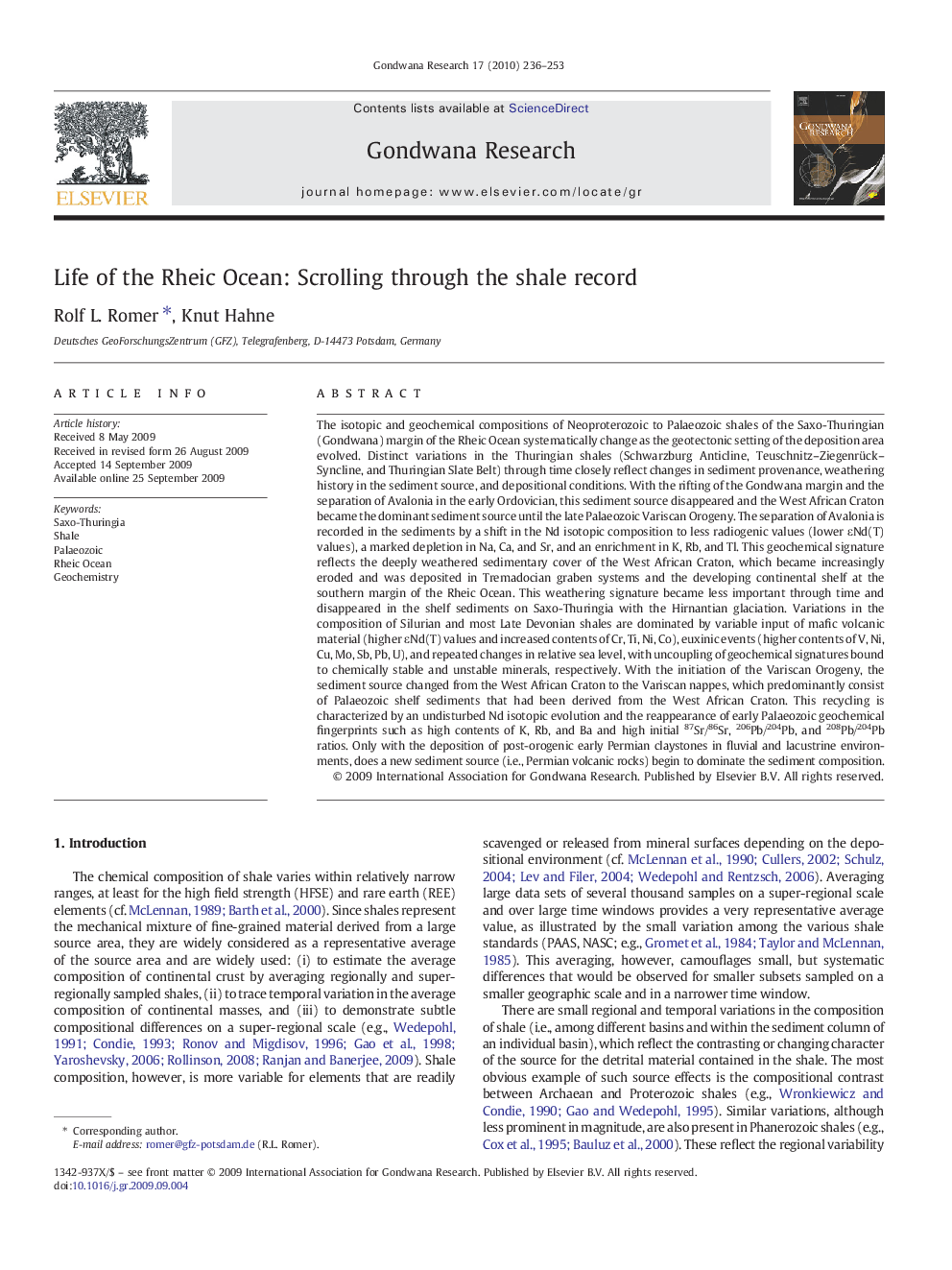| کد مقاله | کد نشریه | سال انتشار | مقاله انگلیسی | نسخه تمام متن |
|---|---|---|---|---|
| 4727228 | 1640149 | 2010 | 18 صفحه PDF | دانلود رایگان |

The isotopic and geochemical compositions of Neoproterozoic to Palaeozoic shales of the Saxo-Thuringian (Gondwana) margin of the Rheic Ocean systematically change as the geotectonic setting of the deposition area evolved. Distinct variations in the Thuringian shales (Schwarzburg Anticline, Teuschnitz–Ziegenrück–Syncline, and Thuringian Slate Belt) through time closely reflect changes in sediment provenance, weathering history in the sediment source, and depositional conditions. With the rifting of the Gondwana margin and the separation of Avalonia in the early Ordovician, this sediment source disappeared and the West African Craton became the dominant sediment source until the late Palaeozoic Variscan Orogeny. The separation of Avalonia is recorded in the sediments by a shift in the Nd isotopic composition to less radiogenic values (lower εNd(T) values), a marked depletion in Na, Ca, and Sr, and an enrichment in K, Rb, and Tl. This geochemical signature reflects the deeply weathered sedimentary cover of the West African Craton, which became increasingly eroded and was deposited in Tremadocian graben systems and the developing continental shelf at the southern margin of the Rheic Ocean. This weathering signature became less important through time and disappeared in the shelf sediments on Saxo-Thuringia with the Hirnantian glaciation. Variations in the composition of Silurian and most Late Devonian shales are dominated by variable input of mafic volcanic material (higher εNd(T) values and increased contents of Cr, Ti, Ni, Co), euxinic events (higher contents of V, Ni, Cu, Mo, Sb, Pb, U), and repeated changes in relative sea level, with uncoupling of geochemical signatures bound to chemically stable and unstable minerals, respectively. With the initiation of the Variscan Orogeny, the sediment source changed from the West African Craton to the Variscan nappes, which predominantly consist of Palaeozoic shelf sediments that had been derived from the West African Craton. This recycling is characterized by an undisturbed Nd isotopic evolution and the reappearance of early Palaeozoic geochemical fingerprints such as high contents of K, Rb, and Ba and high initial 87Sr/86Sr, 206Pb/204Pb, and 208Pb/204Pb ratios. Only with the deposition of post-orogenic early Permian claystones in fluvial and lacustrine environments, does a new sediment source (i.e., Permian volcanic rocks) begin to dominate the sediment composition.
Journal: Gondwana Research - Volume 17, Issues 2–3, March 2010, Pages 236–253